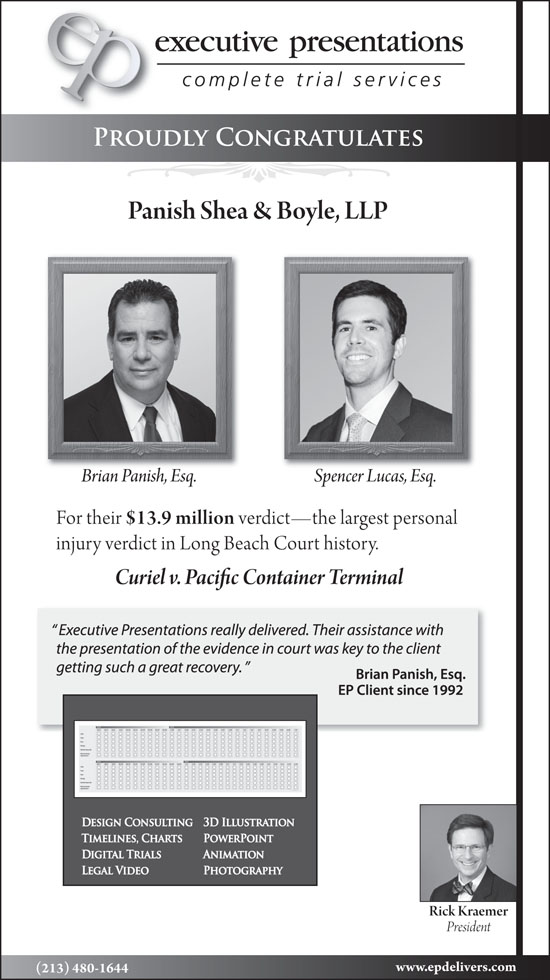
EP Proudly Congratulates: Alderlaw, PC; Law Offices Of Diane Corwin
March 16, 2012
EP Proudly Congratulates: Panish Shea & Boyle, LLP
March 23, 2012There are lessons to be learned
when Tinseltown is the teacher
By Rick Kraemer and Naomi Musnicki
For hundreds of years, oratory skills were the primary means by which to persuade a jury. Times have changed. Courtrooms have now become multimedia shows designed to hold the jurors’ interest and to convincingly communicate the client’s story. In effect, trial attorneys are much like movie directors as they orchestrate the drama played out in court. In addition to creating the “plot” or case theme, juggling clients and witnesses, and playing to the audience of jurors, attorneys must now oversee technical and artistic support staff.
The opening of a trial is much like a movie trailer. It must capture the jurors’ interest and introduce the theme of the case. The lawyer’s job during the case-in-chief is to develop the theme and build the plot. Professionally prepared computer-generated presentations and visuals will help set the stage of a case theme and help move it along. The jury will come to expect the next visual or computer screen to clue them in on where the attorney is taking them.
Just as in the movie business, if the attorney fails to keep the audience’s attention, they may lose interest (at least with a jury, they can’t walk out). Technological advances in the courtroom appeared during the mid-1980s when computer-generated charts were used during the Iran Contra hearings. However, most lawyers continued using simple document blow-ups and hand drawn storyboards to communicate their message. By the late 1980s, electronic projectors such as the “ELMO” and “DOAR” were introduced into the courtroom with images projected onto a screen.
During the 1990s, with the advent of software programs such as PowerPoint, attorneys began preparing more elaborate presentations and dared to be more creative in court. Now, sophisticated trial presentation systems, which allow for graphics and moving imagery, can often be found at trial. With these systems, each individual document, chart and video  recording has its own individual bar code and when the code is scanned, the data is instantly and easily retrieved and used during the course of the trial. Timelines, depositions, written documents and pie charts can be incorporated into the high tech presentation.
recording has its own individual bar code and when the code is scanned, the data is instantly and easily retrieved and used during the course of the trial. Timelines, depositions, written documents and pie charts can be incorporated into the high tech presentation.
Video presentations can be powerful. Taped depositions, where body language, eye contact and vocal inflections otherwise lost when an attorney reads the deposition in court, are there for all to see on videotape. Location videos are also impactful. Often a description or even a photograph of a location that bears importance to a case cannot compare to videotape footage.

